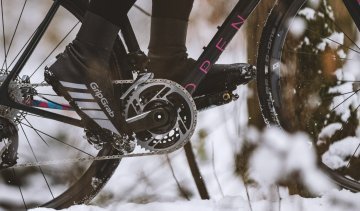
Tips against cold feet while cycling
Winter riding means cold feet? Not anymore! With our tips, you can banish freezing toes and enjoy every chilly ride.
Cycling through autumn and winter: motivation, gear and safety tips. We’ll show you how to get yourself and your bike ready for the cold season.
Dark, cold and wet – cycling in winter doesn’t exactly sound like fun. But once you know how to make yourself and your bike winterproof, it can actually be really enjoyable. No traffic jams, zero emissions – and the great feeling of having already done something for your health. You’ll arrive at the office, university, or wherever you’re headed in a good mood. So what are you waiting for? Get on your bike and beat the winter blues!
Cycling is a year-round activity – with a few precautions and the right gear, it can be great fun even in the colder months. © bc GmbH
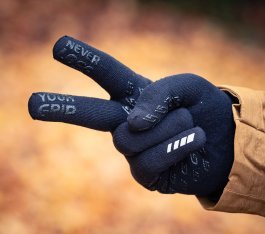
Winter riding rocks – you’ve just got to want it! © bc GmbH
If you keep cycling regularly through winter, you’re actively doing something positive for your physical and mental wellbeing.
Here’s why it’s worth it:
Worried about your lungs in cold air? Try breathing through your nose! The air is warmed and humidified on its way to your lungs. When it’s really cold, wear a neck warmer such as a Buff over your nose and mouth. If you have respiratory issues, check with your doctor before heading out.
The type of tyres you should use for cycling in winter depends largely on the weather conditions where you live.
A good gravel tyre offers plenty of grip in most conditions and fits many road and touring bikes. The upside: low weight. The downside: limited puncture protection. © bc GmbH
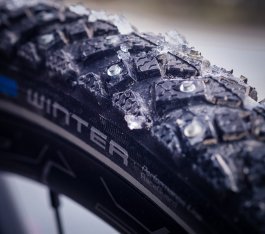
Tough stuff – studded tyres grip well on snow and ice, but they do get pretty loud on tarmac. © Schwalbe
Good grip in winter also depends on running the right tyre pressure. You’ll find the recommended pressure range printed on the sidewall of your tyre – never go below or above it. For winter riding, we recommend using slightly lower pressure than in summer. Use a pressure gauge or a floor pump with a built-in manometer to set the correct pressure. A note for studded tyre fans: on snow- and ice-free days, you can increase the pressure slightly to reduce rolling resistance and the noise from the studs.
A CO2 pump is a compact and quick solution for roadside punctures, but for accurate tyre pressure you should use a gauge. © bc GmbH
To make your bike winter-ready, you should definitely fit mudguards – if it doesn’t already have them. Depending on your bike type and setup, you can either mount full-length mudguards permanently or use clip-on versions for the wet and cold season. The longer they are and the more they wrap around the tyre, the better they’ll protect you from dirt and spray.
Effective mudguards don’t have to be heavy or ugly. The Ass Savers Win Wing weighs only a few grams and keeps off a surprising amount of dirt! © bc GmbH
If you want to fit full mudguards on a sporty bike, there are plenty of good options — like the SKS Speedrocker shown here. © bc GmbH
To comply with German road regulations (StVZO), your bike or e-bike must be equipped year-round with a white front light and a red rear light – both ideally featuring a standlight function. In winter, good lighting is especially important, so that you can see and be seen. The following reflectors are also mandatory: one white at the front, one red at the rear, two yellow reflectors per pedal (one facing forward, one backward), and on the wheels, either two yellow spoke reflectors, a continuous reflective strip on the tyre sidewall, or reflective spoke clips. Make sure your lights and reflectors are approved by the German Federal Motor Transport Authority – look for the K-mark, consisting of a wave symbol, the letter “K”, and a number. Lighting may be dynamo-, battery- or rechargeable battery-powered.
To further increase your visibility, you can add extra lights to your bike. For example, upgrade your headlight with daytime running light, high beam or standlight functions; use a rear light with a brake-light feature; or even mount a second headlight – especially useful on unlit roads and paths. You may now also fit turn indicators on single-track bicycles. Flashing lights are prohibited if they are permanently installed on the bike, but you can use them on your helmet, bag or backpack. Just make sure not to dazzle others. Helmet lights, which are great for mountain biking, count only as additional lighting on the road and must not dazzle other road users. Check out our bike lighting guide for more information.
Never without: A bright front light is not only legally required for riding in the dark, but simply belongs to every bike’s basic equipment. © bc GmbH
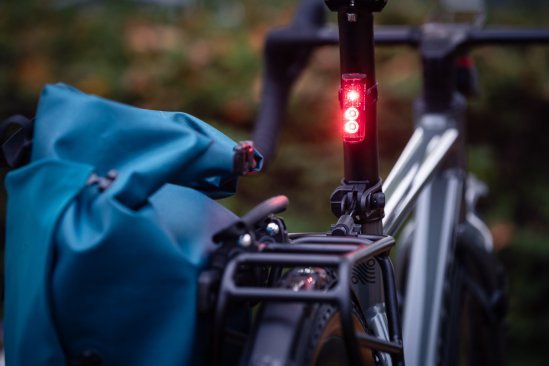
Rear lights like the Sigma Blaze are featherlight and even feature a brake light function triggered by an acceleration sensor. © bc GmbH
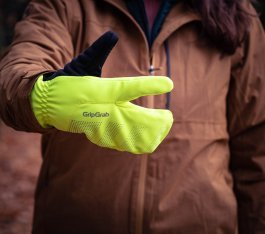
If you want to be prepared for truly cold conditions, you’ll also find suitable winter clothing. Lobster gloves are mittens with a separated brake finger. © bc GmbH
The right level of warmth when winter commuting by bike depends on your route, riding style, duration and how sensitive you are to the cold. For short rides, a warm and breathable jacket will usually do the trick; on rainy days, you’ll need a rain jacket. For rides longer than 30 minutes, the so-called layering system is key. Start with a close-fitting, moisture-wicking base layer, add an insulating mid-layer such as a cycling jersey or fleece, and finish with an outer jacket or trousers (shell layer) to protect you from wind and rain. Depending on the temperature and how cold you feel, you can choose thinner or thicker, short- or long-sleeved undershirts, and lightweight or lined jerseys. For the outer layer, select a windproof gilet, a windproof jacket, or a rain jacket or trousers, depending on the weather. A warm softshell jacket is also a great choice for dry but very cold conditions. You can learn more in our clothing guides on base layers, mid-layers and rain and wind protection.
Helmets with flip-up visors, like the uvex Finale Visor, are particularly practical for riding in cold weather and are becoming an increasingly common sight in cities. © bc GmbH
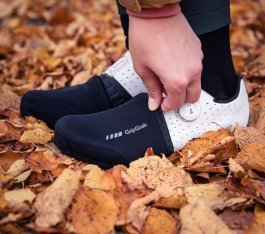
Small parts, great effect: Toe caps help keep your feet warm. © bc GmbH
To make sure you’re clearly visible to other road users, we recommend wearing bright and reflective cycling clothing. High-visibility apparel (Hi-Vis for short) is the key here. Small extras such as reflective bags, backpacks or matching covers, helmets with integrated LED lights, and reflective gloves or overshoes will make you even more visible. In our blog article “High-Visibility for Cyclists”, you’ll find everything you need to know about staying visible on the road.
When buying gloves, make sure they’re not too tight — even when your fist is closed. © bc GmbH
Cold hands and chilly feet can quickly become an issue, especially on longer winter rides. The right cycling gloves, socks, winter shoes and overshoes will help. In our blog articles “Cold hands” and “Cold feet while cycling”, we explain what you can do to keep warm.
And last but not least: with a breathable headband or helmet cap, your ears and head stay comfortably warm. On rainy or snowy days, a jacket with a helmet-compatible hood or a helmet cover will keep your head dry.
Bicycle helmets are generally well ventilated — which can be a drawback in winter. If you wear a ponytail, a headband may be a better choice than a skullcap under the helmet. © bc GmbH
In addition to the right bike setup and suitable clothing, there are a few more things you can do to stay safe and comfortable when cycling in winter:
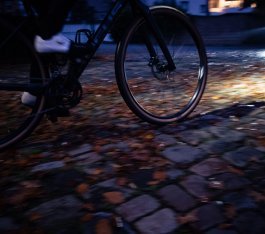
Especially in autumn, wet leaves or moisture can make the roads extremely slippery! © bc GmbH
When it’s cold, you should breathe in through your nose. This way, the air takes a longer path to your lungs and is warmed and moistened more effectively than when you breathe through your mouth. When it’s very cold, cover your mouth and nose with a scarf or buff. If you have respiratory or lung issues, consult your doctor before cycling in low temperatures.
For winter cycling, you’ll need proper winter tyres, mudguards, StVZO-compliant bike lights, and reflective, weatherproof clothing suitable for cold and rainy conditions. We also recommend having your bike serviced after the winter season.
It depends: on snow and ice, choose tyres with spikes, a grippy tread and a special winter compound. If it’s just wet and cold, go for tyres with an all-season or winter compound and a solid tread pattern for extra grip.
If your bike comes into contact with road salt, cleaning is the only cure! Use a bike cleaner and lukewarm water, making sure to remove all salt residues to prevent rust.
Yes. Studded tyres are permitted on bicycles and e-bikes (with motor assistance up to 25 km/h) in Germany. They are, however, banned on motor vehicles such as S-pedelecs (up to 45 km/h), as these are classified as mopeds.
Yes, cold temperatures reduce battery capacity. Avoid exposing your battery to freezing conditions, as performance and range will drop. Don’t leave your bike—or at least the battery—outside for long in sub-zero temperatures. A thermal battery cover can help, and always charge the battery at room temperature!
Yes. Your lights and reflectors must be StVZO-approved. You can recognise this by the official approval mark (a “K-number”). Using non-approved lights may result in a fine.